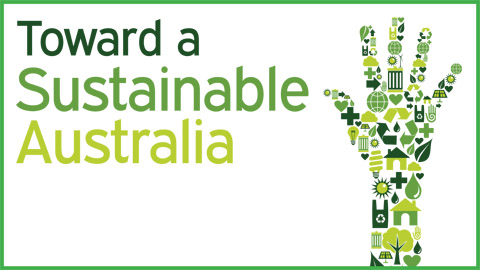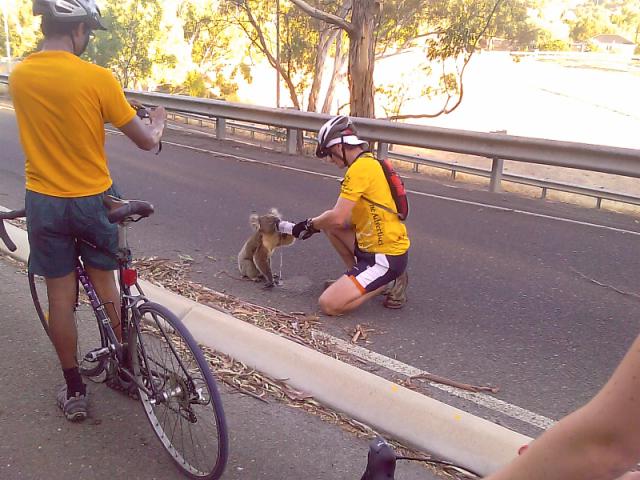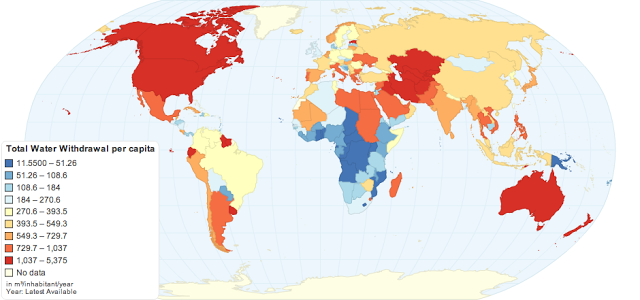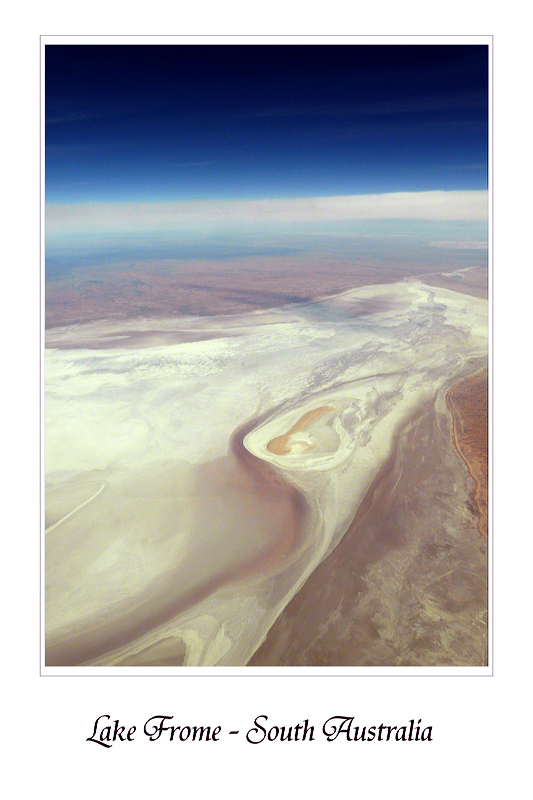
The bureau of meteorology is required to collect, manage, hold interpret and disseminate Australia’s water information. That was set in Australia’s 2007 water act (bom.gov.au). The bureau’s responsibilities under the act include:
- issuing national water information standards
- collecting and publishing water information
- conducting regular national water resources assessments
- publishing an annual National Water Account
- providing regular water availability forecasts
- giving advice on matters relating to water information
- enhancing understanding of Australia’s water resources.
According to the Sustainable Australia in brief 2013 value of agricultural production has increased and at the same time the water extraction decreased. Households reduced their water consumption by 35% in the decade to 2011 (environment.gov.au).
Australia seems to be on the right track with conservation. Setting in place standards of water use and is showing that the country is willing to follow those standards by decreasing their water use for a sustainable future.
The education level in Australia has risen. By 2012 80% of people aged 20 to 64 has finished the 12th grade. Vocational or higher 60% up from 1994″Australia is among the high performing countries in the OECD for 15 year olds’ competency in reading, mathematics and science”. (environment.gov.au). However that is not across the board in all Australia’s territories. It drop considerably lower among the less populated and disadvantaged regions.
Some programs that Australia is trying to utilize are using more rain buckets and rain water harvesting, vertical gardens which is exactly how it sounds. Vertical planting so the water is reused plant by plant. Shower towers and cooling towers.The shower and cooling tower systems use water as the cooling media, allowing for an energy-efficient cooling system. Recycled water is used in the cooling towers, while the shower towers use mains water. (melbourne.vic.gov.au).
Water for the future is the Australian governments long term initiative for the future in farmers, environment and community. Water for the future is built on 4 priorities: Taking action on climate change, using water wisely, securing water supplies and supporting healthy rivers and wetlands (environment.gov.au). Australia is investing in desalinization, water recycling, storm water harvesting and reuse projects to help with rainwater collection. Also by funding local projects to save and reduce water projects in towns and cities across Australia. for the future Australia seems like it is on the right track. Governments are helping regions and municipalities in helping their citizens get water. Helping them get water and conserving the water that they are able to get. Even though Australia is split up into different territories I see that the Government is very aware of the water issues and have been addressed in the top tier of discussion since 2011. The Australian Government is preparing the territories for climate change on their water sources through
- the development of a Basin Plan to establish sustainable water diversion limits in the Murray-Darling Basin;
- better monitoring, assessment and forecasting of the availability, condition and use of water resources in Australia;
- helping farmers and rural communities plan for the impacts of climate change on water availability;
- assessing current and future water availability in the Murray-Darling Basin, Tasmania, south-west Western Australia and northern Australia through the CSIRO Sustainable Yields projects; and
- investigation of the development of northern Australia’s water resources (.environment.gov.au). The governments of Australia are in control of the water, but they higher company’s who are better equipped and more knowledgeable to take care of it. In several of the territories in Australia people are allowed to sell there water. Kind of like in the U.S. we have water rights, but in certain parts in Australia if you want to sell your water you have to put in an application to sell your water. They do that to make sure it is not harming anything or anyone past your property.
There has not been a lot of serious water conflicts in Australia. I believe it is because of the territory split. The different territories have different governments to control their waters. One that stands out on the national level is that an Australian man was charged with killing another over water restrictions in Sydney, Australia. A 66 year old man was watering his grass on the right day, but then heard a comment from a passerby. The 66 year old man sprayed the passerby with the hose which prompted the 36 year old walker to beat the man down. the 66 year old man died in the hospital later (.abc.net.au). Sometimes it gets so hot in Australia that animals ask for water.
I believe that in the future if we don’t make sure that water conservation is a tier one concern we as in the world will have a problem. When I think of the water crisis in so many places I think of the movie Mad Max. Water as the most valuable resource and only few control it. The world dries out and its a struggle to stay alive in the waste lands. I don’t know how far this future is definitely not in my life time but maybe n my sons life time. I think desalination is a big help that we need to invest more money in. If the world is getting warmer than we need to harvest the water instead of letting it evaporate. Ground water and aquifers need to be our last resort reserves and should not be used unless truly necessary.


 United States
United States






